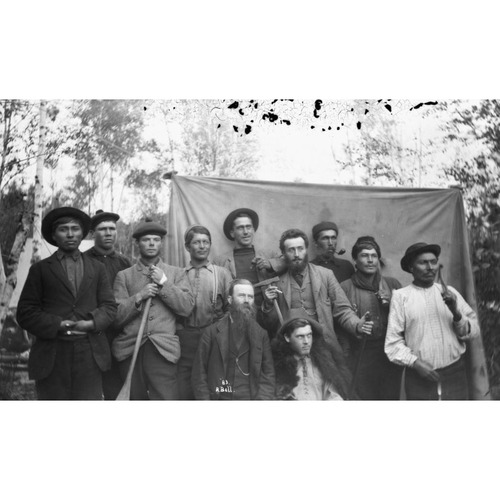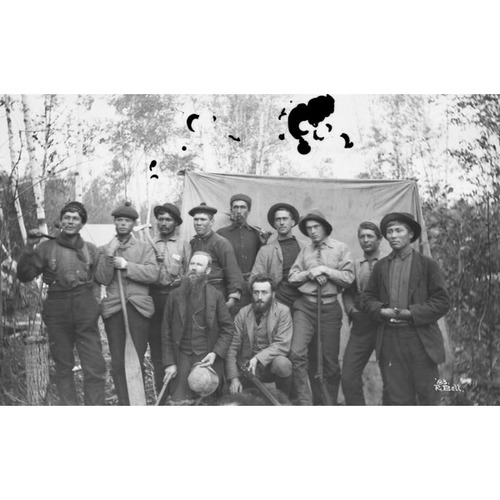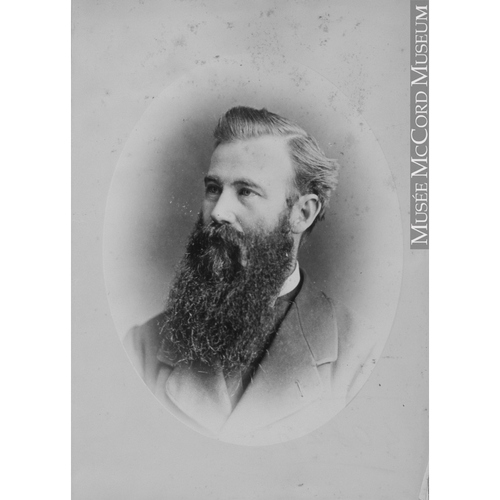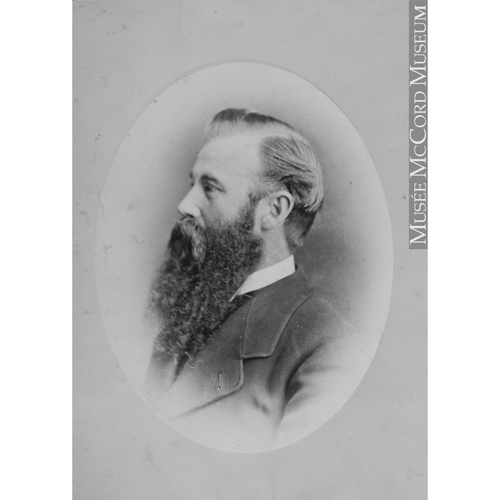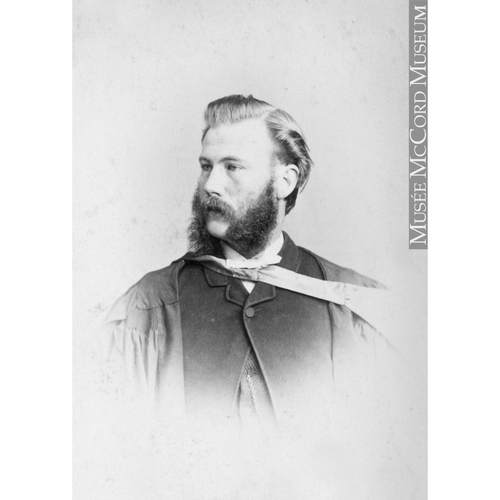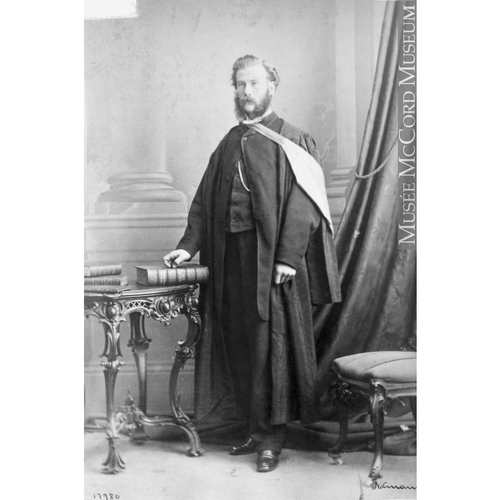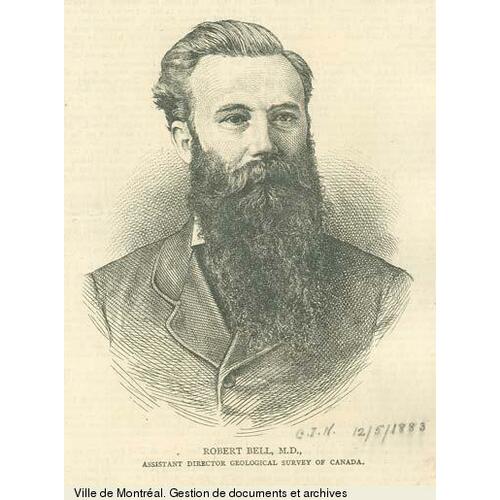
Source: Link
BELL, ROBERT, scientist, professor, and civil servant; b. 3 June 1841 in Toronto Township, Upper Canada, son of Andrew Bell* and Elizabeth Notman; m. 1873 Agnes Smith, and they had a son and three daughters; d. 17 June 1917 in Rathwell, Man.
Educated at L’Orignal, Upper Canada, Robert Bell was the son of a Presbyterian clergyman and respected amateur geologist who made an important collection of rocks and fossils in the lower Ottawa River region. The elder Bell not only cultivated this love of science in his son, but also used his connections to secure a temporary position for him with the Geological Survey of Canada in December 1856. The following summer Robert assisted Sir William Edmond Logan*, the survey’s director, in the Saguenay region of Lower Canada. This fieldwork was the beginning of an illustrious career with the GSC that would span half a century.
While working for the survey during the summers on a temporary basis, Bell pursued a degree in applied science from McGill College in Montreal, graduating in 1861 with the Governor General’s Medal. Two years later, after a period of study at the University of Edinburgh, he joined the faculty of Queen’s College in Kingston, Ont., and he served as interim professor of chemistry and natural science until 1867. In the meantime he continued his summer fieldwork for the GSC; he was made a permanent officer in 1869. Bell spent the remainder of his career with the survey, being named assistant director in 1877, chief geologist in 1890, and, finally, acting director in 1901. He took advantage of the survey’s location in Montreal, before its transfer to Ottawa in 1881, to secure a medical degree from McGill in 1878. He wanted to be prepared for any mishap during his field trips.
Bell’s work with the survey took him to all regions of the new dominion; the range of his field endeavours was truly amazing. He is probably best remembered for his extensive explorations in present-day northern Quebec, Ontario, and Manitoba in the 1870s and 1880s, during which time he mapped the rivers between Hudson Bay and Lake Superior and reconnoitred part of the route that would later be adopted for the National Transcontinental Railway. He also explored parts of the eastern Arctic, serving as geologist and medical officer on Canadian naval expeditions to Hudson Bay in 1884 and 1885 [see Andrew Robertson Gordon*] and to Baffin Island in 1897. Bell subsequently became a staunch advocate of the Hudson Bay route from western Canada to Europe.
In his fieldwork Bell embraced an incredibly diverse range of topics. He made notes on geology, flora and fauna, climate and soil, indigenous populations, and exploitable resources, and on many trips he collected specimens. This wealth of information is remarkable when it is realized that he performed much of his fieldwork without maps and had to do the topographical surveys as he went along. It is estimated that Bell, who was Canada’s greatest exploring scientist, named over 3,000 geographical features, prompting survey colleagues to call him the father of Canadian place-names. His gathering of information did not cease when he returned home at the close of the field season. One winter, for example, he sent a list of questions about the breeding habits of mammals to Hudson’s Bay Company posts in the northern districts. He also took a lively interest in ethnology, and his papers record a great deal of the oral information on indigenous legends that had been gathered by Bell himself or by traders at his request. As for his formal reports on his field activities, Bell’s data were not simply listed but were presented in such a manner as to leave no doubt that Canada had been blessed with a great natural heritage. He had enormous faith in the country and its destiny, and each field trip strengthened his conviction.
Bell earned a number of Canadian and international awards, including honorary degrees, during his lifetime. In 1865, at the age of 23, he was elected a fellow of the Geological Society of London. A charter-member of the Royal Society of Canada in 1882, he became a fellow of the Royal Society of London in 1897. In 1903 he was made a companion of the Imperial Service Order, in recognition of his long public service, and in 1906 was awarded both the Patron’s Medal of the Royal Geographical Society of London and the Cullum Geographical Medal of the American Geographical Society of New York.
Despite such recognition, Bell was never satisfied with his position at the Geological Survey. He continually plotted against director Alfred Richard Cecil Selwyn* and then George Mercer Dawson*. Stubborn and arrogant, he regarded himself as Logan’s natural successor as director and believed that he had been unjustly denied the position because of his Canadian birth and his support of the Liberal party at a time when the GSC was considered a Conservative clique. He finally assumed the directorship in 1901, upon Dawson’s death, but it was only in an acting capacity and he was unceremoniously replaced five years later by Albert Peter Low*.
Bell officially retired from the survey at the end of November 1908. He spent two years (1912–14) in Europe before settling down to a routine in Canada, dividing his time between Ottawa and his farm at Rathwell, Man. It was there, in relative obscurity, that he died in 1917 after a brief illness.
Robert Bell’s career exemplified the wide-ranging reconnaissance work performed by the government explorer in the late 19th century. He was an all-round generalist who placed a premium on extensive field activity at the cost of detailed, more specialized study. Bell had few rivals, and certainly none who could match his range of territory, eclectic interests, and length of service. His work gave meaning to the term dominion of Canada.
A bibliography of Bell’s publications appears on pp.27–34 of H. M. Ami, “Memorial of Robert Bell,” Geological Soc. of America, Bull. (New York), 38 (1927): 18–34.
McGill Univ. Arch. (Montreal), MG 2042. NA, MG 29, B15. Manitoba Free Press, 25 June 1917: 5. Canadian annual rev. (Hopkins), 1903: 247. Canadian men and women of the time (Morgan; 1898 and 1912). Geog. Journal (London), 27 (January–June 1906): 500. Geological Soc. of London, Quarterly Journal, 22 (1866): vii. Douglas Leechman, “The father of place names,” Beaver, outfit 285 (autumn 1954): 24–28. Royal Soc. of London, The record of the Royal Society of London, 1897 (3rd ed., London, 1912), 436. RSC, Trans., 3rd ser., 12 (1918), proc.: x–xiv. Scottish Geog. Magazine (Edinburgh), 33 (1917): 366–67. W. A. Waiser, The field naturalist: John Macoun, the Geological Survey, and natural science (Toronto, 1989). Morris Zaslow, Reading the rocks: the story of the Geological Survey of Canada, 1842–1972 (Toronto and Ottawa, 1975). Suzanne Zeller, Inventing Canada: early Victorian science and the idea of a transcontinental nation (Toronto, 1987).
Revisions based on:
Royal Geographical Soc., “Medals and awards,” the gold medals: www.rgs.org/about/medals-award/history-and-past-recipients (consulted 24 July 2019). “Transactions of the Society,” American Geographical Soc. of New York, Journal (New York), 29 (1897): 247; 31 (1899): 97–100.
Cite This Article
W. A. Waiser, “BELL, ROBERT (1841-1917),” in Dictionary of Canadian Biography, vol. 14, University of Toronto/Université Laval, 2003–, accessed April 27, 2025, https://www.biographi.ca/en/bio/bell_robert_1841_1917_14E.html.
The citation above shows the format for footnotes and endnotes according to the Chicago manual of style (16th edition). Information to be used in other citation formats:
| Permalink: | https://www.biographi.ca/en/bio/bell_robert_1841_1917_14E.html |
| Author of Article: | W. A. Waiser |
| Title of Article: | BELL, ROBERT (1841-1917) |
| Publication Name: | Dictionary of Canadian Biography, vol. 14 |
| Publisher: | University of Toronto/Université Laval |
| Year of publication: | 1998 |
| Year of revision: | 2020 |
| Access Date: | April 27, 2025 |


